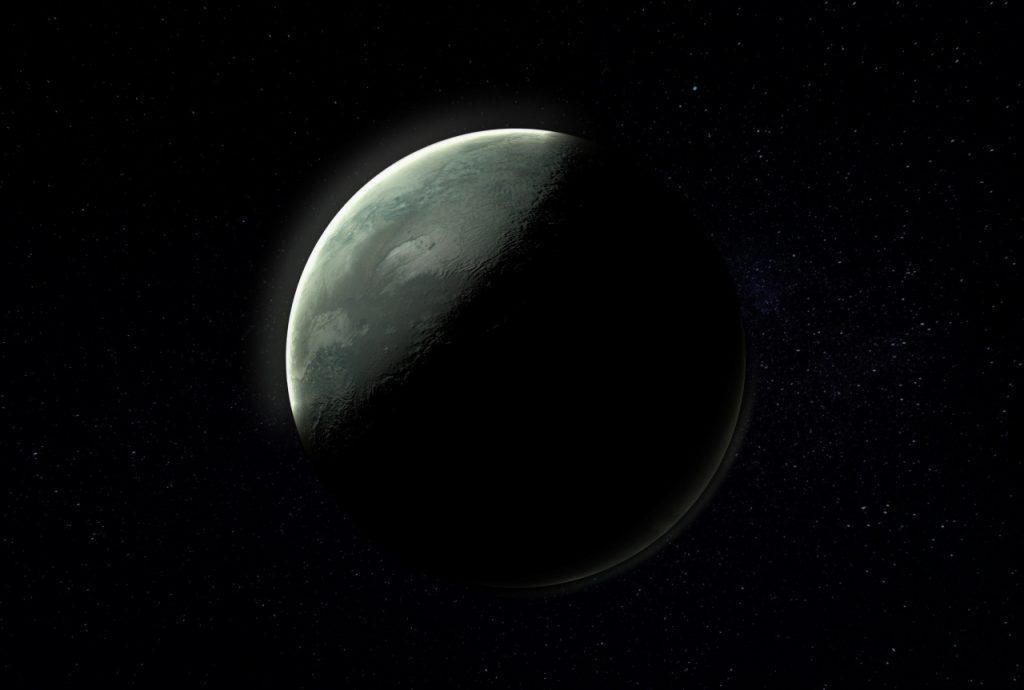Images from the IRAS telescope, which has been out of order since 1983, have found something that could be the hypothetical ninth planet of our solar system. But astronomers have doubts.

Is this a trace of the existence of the mysterious ninth planet of the solar system? Found in photos from the 1980s (Image: Getty Images)
It became resounding a few years ago about the presence of a ninth planet in the solar system. In 2016, it was observed that the orbits of objects orbiting beyond the orbit of Neptune (so-called trans-Neptunian objects) aligned with strange patterns. Their orbits can be explained if it is assumed that they are the result of the influence of a hitherto unknown planet.
If Planet Nine orbits the outer solar system, it will be very difficult to prove it. At this distance, the solar radiation is already very weak, so the planet does not reflect much of it either. No current telescope will be able to see it. Only if it’s certain?
A satellite that has been in operation for less than a year has detected an unknown object. Is it the ninth planet?
In 1983, the IRAS satellite was launched into orbit and monitored the sky for comets and asteroids. These types of objects are often invisible under visible light, but can be observed in the infrared range. You can’t do that with Earth because the atmosphere absorbs infrared radiation.
Therefore, a telescope was created installed on IRAS, which required helium cooling in order not to record its own heat, that is, infrared radiation. Helium stocks lasted only nine months of operation.
Today – almost 40 years later – in a research paper published on the ArXiv website, Michael Rowan Robinson of Imperial College London announces that he has found an undetected object in an image from the IRAS satellite. If it is a planet, it has a mass three to five times that of Earth, and is 225 times farther from the Sun.
It is not possible to say for sure whether a planet has been observed
However, the parameters of the telescope do not make it possible to clearly say whether it is a planet or not. At the time of observation, the object was close to the plane of the Milky Way, so it may be a hitherto unknown star, located far from us.
“In pictures, the body is moving,” adds Rowan Robinson. He doesn’t admit it explicitly, but he does suggest that it might be a planet in our solar system, not a distant star.
It’s an interesting discovery, says Mike Brown of the California Institute of Technology – one of the astronomers who speculated on the existence of Planet Nine in 2016 -. However, for the ninth planet, the object is very small, and its orbit is very inclined relative to the plane of our system. There is no good explanation for the strange orbits of trans-Neptune objects.
Is it really the ninth planet? We’ll find out soon
In a paper accepted for publication in the scientific journal Monthly Notices of the Royal Astronomical Society, Rowan Robinson remains sceptical. In it he writes that due to the quality of the images and its proximity to the sky, the possibility of this planet being the ninth is not “amazing”. He seems even more certain in a brief statement to New Scientist Weekly: – If this object is real and not Planet Nine, it must have been an unusual coincidence.
An explanation of this problem may appear soon. The James Webb Space Telescope is expected to reach orbit later this year. At the European Southern Observatory in Chile, the Very Large Telescope, or Very Large Telescope, is being built, which is set to begin observations in three years. Both will be able to confirm or rule out whether Planet Nine has indeed been found in the images from the IRAS satellite.
Computer simulations also indicate the presence of a ninth planet. Its presence may explain the unusual order of planets around the sun. The most massive gaseous planets usually orbit around the star closest to them. If smaller planets are discovered, they usually orbit the star far away.




More Stories
Nvidia GeForce RTX 4090: AIDA64 gets Ada spearhead support
Rogue Trader – Details about the first cRPG in the series – CD-Action
t3n – Digital Pioneers | digital business magazine